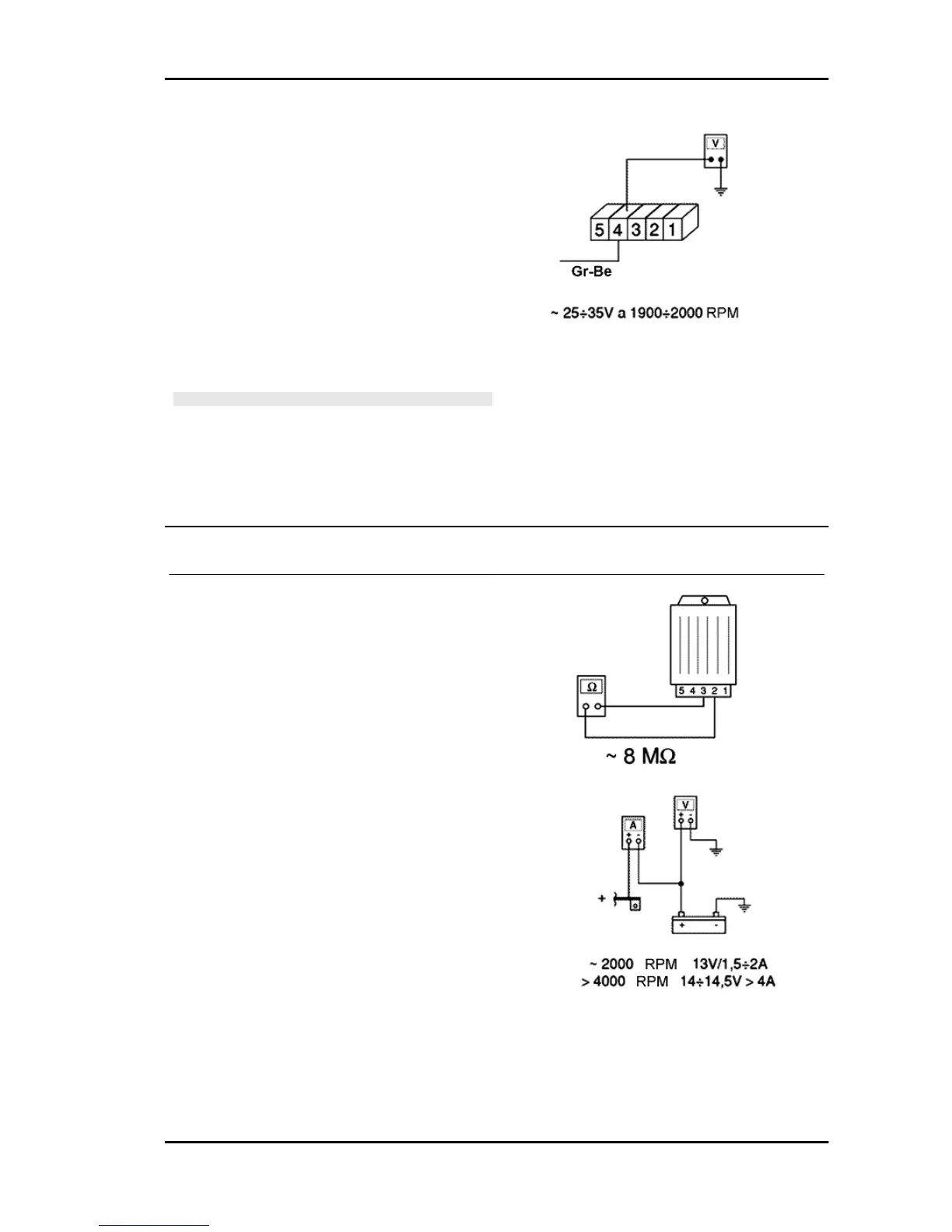As a last check, the voltage supplied by the stator
can be measured:
- Disconnect the regulator connector and place a
tester between the Grey-Blue cable (4) and the
earth in order to detect alternating voltages (see
figure).
- Voltage supplied at 2000 rpm must be about 25
÷ 35V.
If no values are detected with this test, replace the
regulator because it is obviously broken.
N.B.
TO MEASURE THE ABOVE VOLTAGE USE AN ANALOGUE
TESTER THAT CAN MEASURE ALTERNATING VOLTAG-
ES AND KEEP THE ENGINE AT IDLE TO HAVE AN ALTER-
NATING VOLTAGE OF A FREQUENCY AS CLOSE AS
POSSIBLE TO 50HZ SO AS TO DETECT THE EFFICIENT
VOLTAGE VALUE SUPPLIED BY THE REGULATOR
(ABOUT 12V).
Recharge system voltage check
3) Battery fails to recharge
a failure in the direct current section of the voltage
regulator may cause the following problems de-
pending on the type of fault:
a) Protection fuse blows due to overvoltage
(regulator in short circuit) and consequently
the battery fails to recharge.
b) Battery fails to recharge (regulator interrup-
ted).
Measures
a) Protection fuse blows (regulator in short circuit).
Check that the wiring connecting the protection
fuse and the key switch is not damaged and caus-
ing a short circuit to the earth (thus excluding the
possibility that the regulator is damaged); if the
protection fuse blows only after the key switch is
set to "ON" and with the regulator connector dis-
connected, check that the upstream wiring and
devices of the key switch are not in short circuit to
the earth. Now measure the resistance between
contact 3 (White) and contact 2 (Black) of the volt-
MSS ZIP 100 4T Electrical system
ELE SYS - 57
